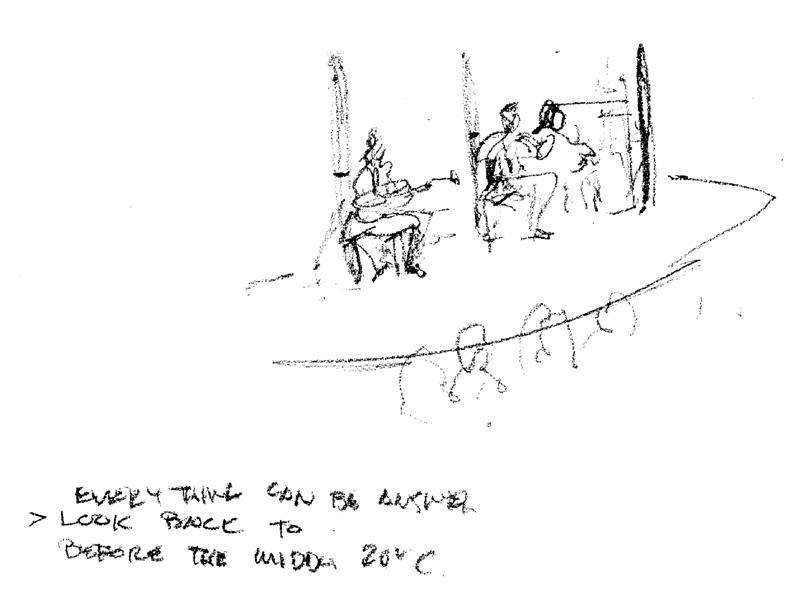Earliest Sketch of New Approach
This sketch was done by Lou G on tissue paper. Ken was describing to him our new concept for amplifying live music, long before it had been tested or received any approval to move forward with commercialization.
Lou is a very gifted artist and industrial designer. Some of Bose's most successful home entertainment products were done by him.
He was sketching as Ken talked, sitting across from Ken at a conference table.
Ken was looking at what he was drawing and couldn't make heads or tails of it and was thinking to himself: does he get this?
Then, shockingly, Ken realized that Lou was drawing UPSIDE DOWN, so that the sketch was correct for Ken sitting across from Lou.
The reason Ken couldn't figure it out is that his brain was assuming Lou was drawing right side up for himself.
When Ken dug out this sketch, for the longest time he could not figure out what the words meant scrawled at the bottom of the drawing.
The words are in Lou's hand, and he must have been taking notes.
Ken was confused by what looked like "20 degrees C" at the end of the phrase.
- Everything can be answer > look back to berfore the midda 20 degrees centigrade.
And then it dawned on him.
What it says is:
- Everything can be answered. Look back to before the middle of the 20th Century.
This is a reference to Bose's work to understand the history of amplification and the problems that were getting in the way.
What Bose ended up calling the "era of individual instrument amplification" was a natural extension of unamplified music. And things were ok.
In its Music is Human presentation introducing the L1 concept, Bose used the Beatles at Shea Stadium as the breaking point -- when the popularity of the music exceeded the ability of the technology to deliver a good listening experience to huge crowds. It was the reaction to that commercial problem -- in place by Woodstock -- that spawned triple systems.
